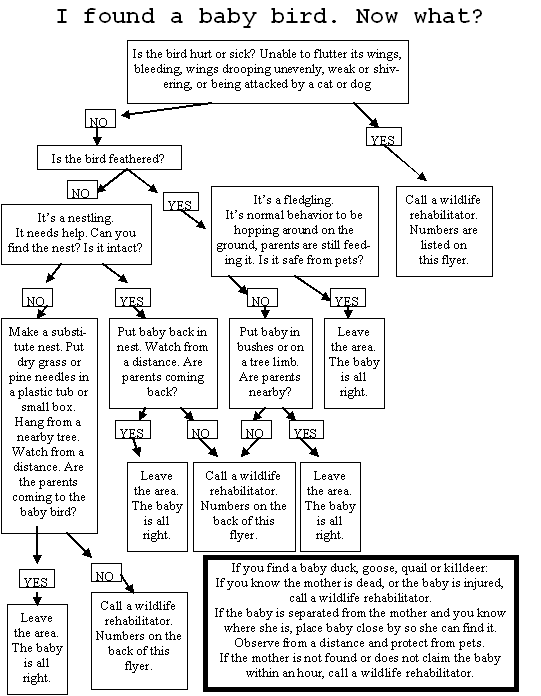

How to rescue baby birds -Only adults should rescue baby birds.
Before rescuing adult birds seek guidance from a wildlife rehabilitator-some
birds can be very dangerous.
1 Prepare a container. Put a soft cloth in a cardboard box or cat/dog carrier
with a lid.
If there are no air holes, make some. For smaller animals you can use a
paper sack with air holes punched in.
2 Protect yourself. Wear gloves. Some birds may stab with their beaks or scratch
with their talons,
and wild birds can have parasites.
3 Cover the bird with a light sheet or towel.
4. Gently pick up the bird and place it in the container you have prepared.
5 Warm the bird if it is cold out or if it is chilled. Put one end of the
container on a heating pad set on low.
Or fill a plastic bottle with hot water, wrap bottle in cloth and put next
to animal.
Make sure the bottle doesnít leak or the animal may get wet and chilled.
6 Tape the box shut or roll the bag closed.
7 Note exactly where you found the bird, and how. This is very important!
8 Keep the bird in a warm, dark place. Donít give it food or water.
Leave it aloneódonít handle or bother it. Keep children and pets
away.
9. Contact a wildlife rehabilitator, or one of the other numbers on this flyer.
Donít keep the bird any longer than necessary. Keep the bird in the
container, donít let it loose in your house.
10 Wash your hands after contact with the bird.
Wash anything the bird came in contact with to prevent the spread of diseases
and or parasites to you or your pets.
11 Take the bird to a rehabilitator as soon as possible.
Back to the wildlife rehabilitation page